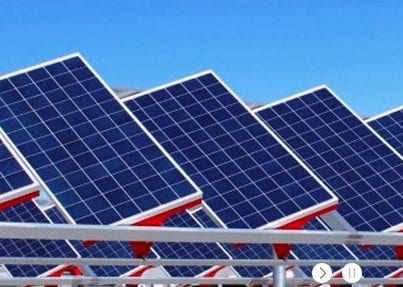A local Australian steel products manufacturer is making waves in the solar world, recently installing on its own premises a rooftop solar farm that utilises ‘follow the sun’ technology to substantially increase power generation.
The 340 sun-tracking solar panels arranged on top of Hilton Engineering’s 15,000 square metre factory in the Dandenong South, in the south east extremities of Melbourne, were switched on for the first time on October 4t.
 This ‘sun-tracking’ technology allows the 98.6kW array to generate up to 40% energy than just normal stand-alone technology.
This ‘sun-tracking’ technology allows the 98.6kW array to generate up to 40% energy than just normal stand-alone technology.
The project idea came about two years ago while working with ABB, an automated technology group, to start working on a test site. Hilton was happy to put forward their rooftop for the project.
The frames and tracking technology were built by Hilton and programmed by ABB. The benefit of Hilton’s lightweight frame means that the factory did not require any additional support requirements – a frequent problem for commercial rooftops.
The panels were provided by UpSolar and retrofitted with Tiogol technologies on each panel that enabled Hilton to monitor individual capacity and maintenance.
Jacques Esper, the project manager for Hilton, said that no one had done this type of an installation in Australia before and they wanted to make sure it was cutting edge technology.
“We spoke to our Managing Director about investing in the project, as the grant doesn’t cover the ‘follow the sun’ technology, and he was quite happy to invest to that little bit more to get great returns”.
The extra investment also allowed for a 40 square metre-viewing platform that that could be used in tours as a means to showcase the panels.
The company says the installation will provide 25 per cent of the power needs of the energy intensive business and reduce its bills accordingly. However, because the factory is closed half of Saturdays, Sundays and public holidays, some excess power will have to be sold back to the grid.
Hilton has plans to sell and duplicate the project to other factories and Esper says there is interest from local and international companies.
Hilton applied for a $250,000 clean technology investment grant from AusIndustry and received approval early this year. The project took approximately six months to complete.










